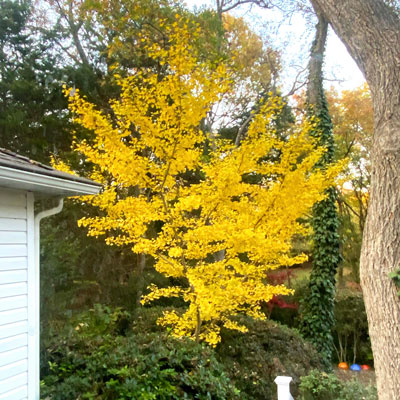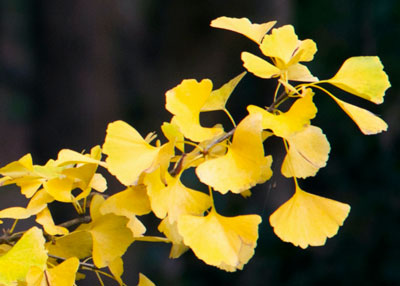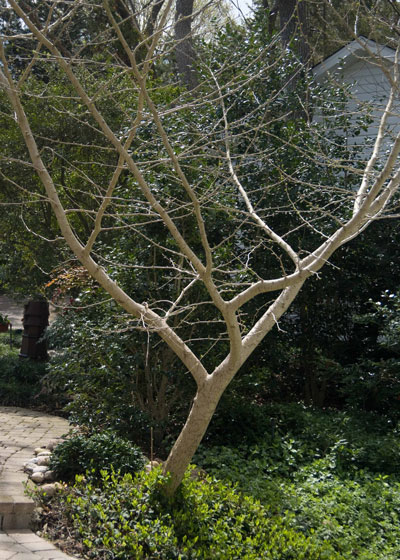We Love This Tree More Every Year

This week’s Plant of the Week is going to come in a series of little facts. I figured it was the best way to tell my story.

• Ginkgo biloba, also known as “maidenhair tree” because its leaves resemble those of maidenhair ferns.
• The highly respected Missouri Botanical Gardens says about it, “It is the only surviving member of a group of ancient plants believed to have inhabited the earth up to 150 million years ago.”
• It has the odd distinction of being a broadleafed plant (leaves are not needles) that is also deciduous, yet it bears its fruit in cones. In that respect, it’s a missing link between gymnosperms (conifers) and angiosperms (broadleafed plants with generally showy flowers and fleshy fruit).

• Its V-shaped branching is instantly recognizable, particularly in winter when all the limbs are exposed.
• Its leaves, if you allow yourself to imagine things (like images in clouds and the Man in the Moon) look like pine needles that have been fused together in a flat plane.
• In 1963, when young Neil Sperry was wandering the streets of College Station and Texas A&M University, there may not have been one ginkgo tree in the county. The first one I saw was in a plant materials class at A&M – a 5-gallon pot shipped in from California.
Pardon the momentary side journey…

• In 1964, newly transferred from my hometown in College Station to Ohio State as a junior, I was seeing 60-foot ginkgo specimens on the campus when I walked across The Oval to my first class in Horticulture and Forestry right there on Neil Avenue.

And now, back to the ginkgoes…

• I’ve loved ginkgoes ever since. They’re great trees for Texas at all seasons. But there are 5 facts you must know:
1. Buy a male, grafted tree so you can avoid the female trees with the horribly smelling fruit. ‘Autumn Gold’ is the most common type and the one we have in three places in our rural landscape.
2. Don’t plan on fast growth. People talk about oaks as being “slow-growing.” That’s not the case. They’ll grow two-thirds as fast as the trash trees. But won’t happen with ginkgoes in Texas. They’re more of the speed of the other cone-bearing, broadleafed, missing-link trees, the magnolias. I refer to both of these trees as “30 m.p.h. growers.”
3. For that reason, count on ginkgoes as a second or third tree in your landscape. Our three have done well as understory trees, in partially shaded locations similar to where I’d be using redbuds and dogwoods.
4. I don’t know this for fact (because there aren’t enough of them planted for me to make good observations), but I’m guessing ginkgoes would be best suited to the eastern half of the state.
5. I’ve never seen even the first insect or disease bother any of our three ginkgoes. Pest free and ready to work for you!

No tree that you plant will bring you any more dependable fall color – always rich, buttery yellow. Without fail. Every year right about now. You just gotta love ginkgoes!
